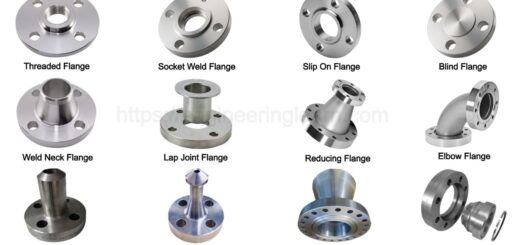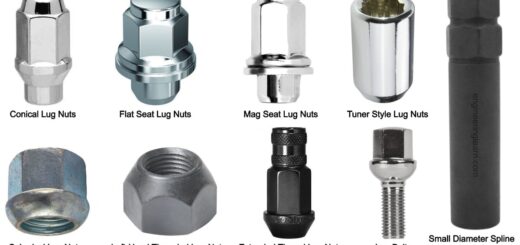8 Types of Grinding Machine: Parts, Working Principle & Grinding Wheel [Complete Details]

What is a Grinding Machine?
Types of Grinding Machine: Parts, Working Principle & Grinding Wheel :- A grinding machine is an industrial power tool that is used to perform the grinding operation. Grinding is the process of removing excess material from a workpiece by the application of the abrasion technique. Generally grinding is a finishing operation that is carried out after other machining operations. In the grinding process, abrasion takes place between abrasive material and workpiece by relative motion. In industrial uses, this relative motion is employed with the help of an electrical motor. This is generally electrically operated but, in some cases, other modes of operation can be used.
Working Principle of Grinding Machine
The grinding machine works on the principle of the grinding process. This is a machining process in which finishing work is carried out on the workpiece. In this process, a solid object composed of abrasive particles is given a relative motion with the workpiece. Due to this relative motion when these abrasive particles come in contact with the workpiece abrasion takes place and excess material is removed from the workpiece.
Generally, in this process, a wheel which is made up of abrasive particles is used which is known as a grinding wheel. This grinding wheel is rotated by an electrical motor. The rpm ranges between 150-15000 RPM depending on the type of machine and operation which is to be performed and finishing quality.
Parameters Required for the Selection of Grinding Machines
Grinding machine varies with the type of uses. A lot of variety of machines are available. So according to our requirement, the selection of grinding machine is necessary for the best output. Following are the few factors/parameters which plays a very important role in the selection of grinding machine
1. Grinding Wheel Size
This is the size of the wheel which is to be used in the grinding process. This depends on the size of the workpiece which is to be finished.
2. Horizontal or Vertical Spindle
This is the selection criteria for the type of Opera which is to be performed. This depends on the alignment in which the process is to be carried out.
3. Frequency or Volt-Rating
This depends on the region where the machine is to be used. For example, if a machine is used in India, then frequency and volt-rating should be 50Hz and 230V but for another region like the USA, the frequency and volt-rating should be 60Hz and 110V.
4. Input Power Requirement
This is also the main parameter that affects the economy of the machine. For small process low power grinding machine are suitable and for large process the power rating should be increased as per requirement.
5. Kind of Control for Grinding Head
The movement of grinding head is fixed in different machine. In some machines head is not adjustable and in others head can be moved in one direction or in two directions. As per our requirement the machine is to be selected.
6. Hand Operated or CNC Controlled
This depends on the use and the level of accuracy is required. For mass manufacturing process CNC is preferred. But for small operations in workshop hand operated is used.
7. No Load Speed
This is also known as idle speed. This is also playing very important role in economy of machine. The idle speed directly affects the power consumption.
Criteria for the Selection of Grinding Machines for the Grinding Operation in Industries
Finding Ideal Kind of Machine
It is the most essential steps for the selection of grinding machine. It totally affects the cost and time in process. Mostly internal, external, and external centres type grinding machines are used. The requirement of these machines has increased in the market. For internal finishing of cylindrical objects internal grinder are used. External grinding machine are used to mainly finishing operations. External types machines are also available in centre less type in which two grinding wheels are provided for the centre of the work piece.
The volume of Grinding
The volume of grinding operation is also important parameter. As a grinding machine has a capability of removing a certain amount volume that is to be removed. For small scale operation where the volume is low hence low volume machines are sufficient. On other hand for machining operation or large-scale operation high volume machine is good. Hence there is a requirement of a large-scale machine with a high investment for massive material grinding.
Latest grinding machines like SMSB SGC 3000 build use of diamond dressing wheels. These machines have the capability of grinding at least forty times more metals than normal machines. The oversized wheels of such grinding machines can grind larger objects at a faster rate. These kinds of machines are faster as compared to smaller manual course grinding.
Technology and Manpower
Several kinds of activities involve manual efforts. Today, machines have several automated features that need fewer manual efforts. It may base the choice to buy the perfect grinding machines on experienced workers and wages. You should not get confused regarding this machine since certain machines become completely turned the way of working.
In the Last
When labour costs are too high and there is a lack of labour, the semi-automated machine is best. The manual grinding process can trigger health risks. Thus, it is beneficial to use the semi-automation grinding machines. Businesses should follow safety standards. They should offer their labours bulletproof glasses and partial automation.
Grinding Wheel

Grinding wheel is the most important part of the grinding machine. Grinding wheel performs the actual grinding operation. It consists mainly two components one is grinding cutting compound and other is bonding material between abrasives. It is mounted over the electrical motor shaft which rotates at very high speed.
A grinding wheel performs several operations in grinding and abrasive machining so proper selection of grinding wheel is required.
Material Used in Grinding Wheel
Grinding materials are selected on the basis of operation that is to be performed. Some of the main types of grinding wheel material are given below;
- Aluminum Oxide
- Zirconia
- Ceramic
- Super Abrasive CBN and Tungsten Carbide
- Silicon Carbide
- Super Abrasive Diamond
Characteristics/Parameters of the Grinding Wheel
- The abrasive grain
- The grain sizes
- Wheel grade
- Grain spacing
- Wheel bond
Construction and Parts of Grinding Machine
1. Base
It is very heavy and high strength part of the grinding machine. It rests on the ground and isolates the vibration to machine from the ground. It is made up of cast-iron casting. Other parts of the machine are mounted over it.
2. Bed
It is mounted just over the base of the machine. Guide ways are mounted on the either side of the bed. Guide ways allow other components to side left or right for the desired operation.
3. Table
Table is mounted over the guide ways on which it can slide. Generally, two tables are provided, one is lower and other is upper. One of them is used for transverse motion and other is used for cross feed. These tables can be feed by hand or power.
4. Head Stock
It is mounted on the left side of the table. It is a casing in wheel driving mechanism, motor and gearbox is fitted. Control buttons are provided outside of it to control the speed of the motor. At the exit of head stock spindle with Chuck is provided to hold the work piece.
5. Tailstock
It is mounted on the right side of the table. The main purpose of this is to hold the work piece straight and at different alignment as per the requirement.
6. Wheel Head
It consists of Grinding Wheel and driving motor and mounted on the middle of the table by some offset to the centre line of Tailstock and headstock. This is placed on the cross feed which moves perpendicular to the workpiece. Feed for the grinding wheel can be provided by hand or power.
Types of Grinding Machine
Grinding machines are broadly classified into two categories which are further classified as follows: –
A) Rough Grinder/Grinding Machines
Rough grinders are those types of grinders which are used to the machining process and where the accuracy is not the main concern
1. Bench Grinder: ( Types of Grinding Machine )
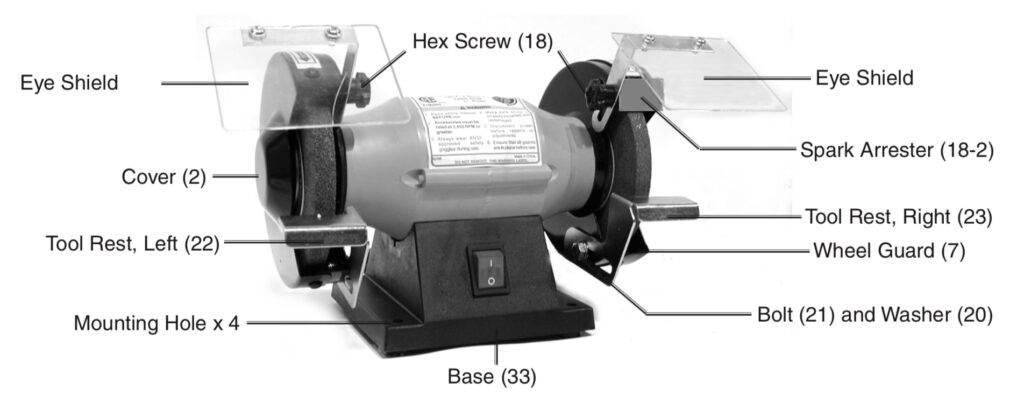
Floor or bench grinders are the small grinders which are used in labs for grinding of small work pieces. For example, cutting tools grinding are carried out by floor or bench grinders.
2. Portable Grinder: ( Types of Grinding Machine )

As name suggests, these are small and light weight grinders. These are used where carrying the work piece to the grinder is not possible. In that case portable grinders are go to solution. These are very small and compact that it can be carried in one hand. These are low power consuming. For example, these are used in cutting of tiles and pipes.
3. Abrasive Belt Grinder: ( Types of Grinding Machine )
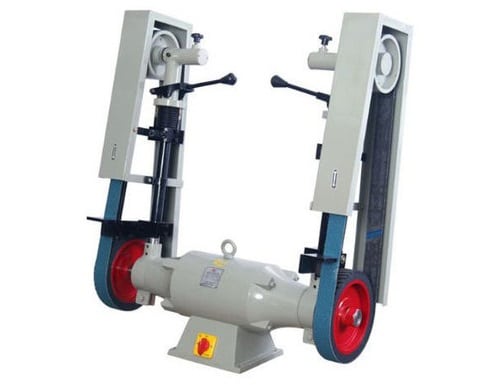
This is similar to the above type of grinders, but the main difference is that it is used in cutting and machining operation. In this grinder belts having abrasive grains are used for operation and transmission of power as well. These have high grain size. These are more costly than floor and portable grinder.
4. Swing Frame Grinder: ( Types of Grinding Machine )
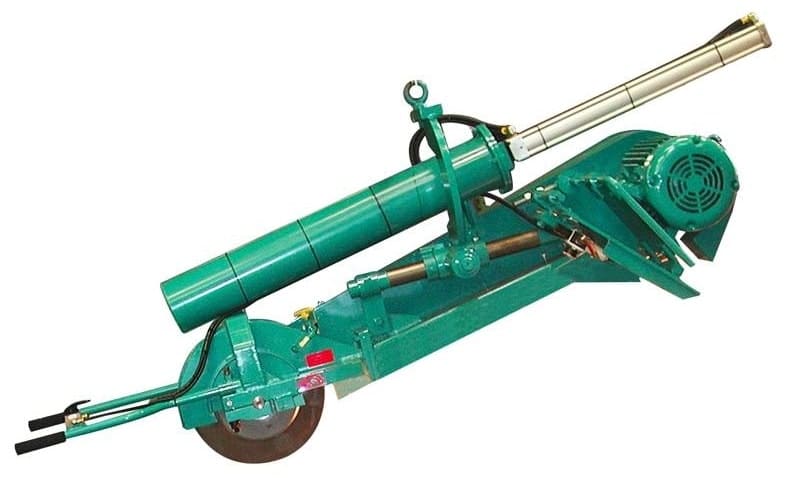
Swing frame grinders are different from other grinders. As name says that the frame of grinding machine is moveable which makes easy to use in complicated space. In this grinder frame can independently move without moving the grinding wheel. This is used for heavy size work pieces.
B) Precision Grinder/Grinding Machines
1. Surface Grinder: ( Types of Grinding Machine )
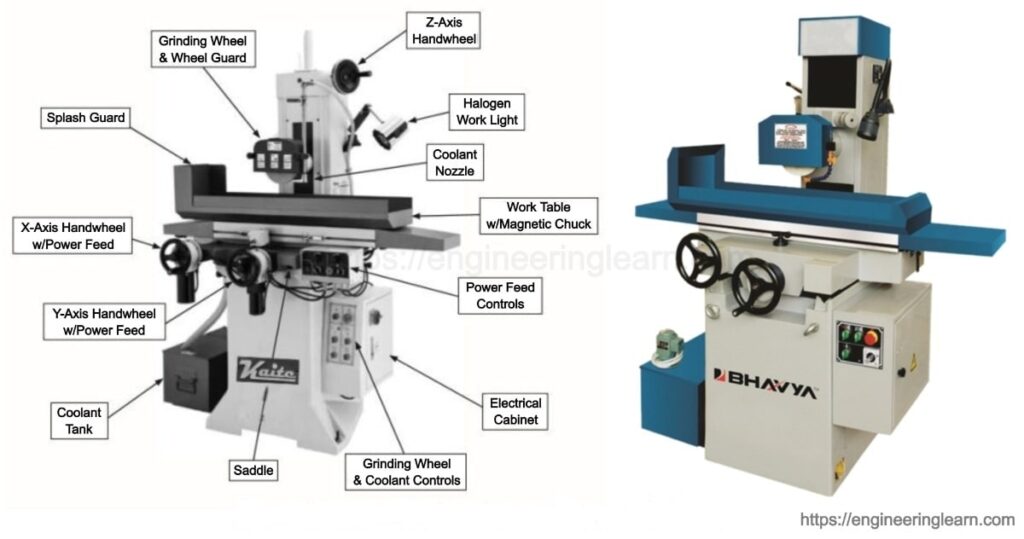
Surface grinder is mostly like small table structure. The main component of this is abrasive wheel, a Chuck and a table which can swivel on the horizontal plane. The Chuck is used to hold the work piece and the with the help of table work piece is fed towards the grinding wheel.
2. Cylindrical Grinder: ( Types of Grinding Machine )

Cylindrical grinders are big size grinders which are used to grind heavy parts. The main components of this type of grinder are base, bed, headstock, tailstock, work table and grinding wheel. The work piece is mounted on the Chuck of the headstock. When Chuck rotates the work, piece is also rotating. The grinding wheel mounted beside the headstock is fed towards the work piece by means of hand or power. Grinding wheel is driven by its own motor.
When grinding wheel comes in contact with work piece, due to relative velocity grinding operation takes place. The grinding wheel is mounted on cross feed which can move it in direction perpendicular to the work piece. This is more or like centre lathe machine type structure.
3.Tool & Cutter Grinder: ( Types of Grinding Machine )
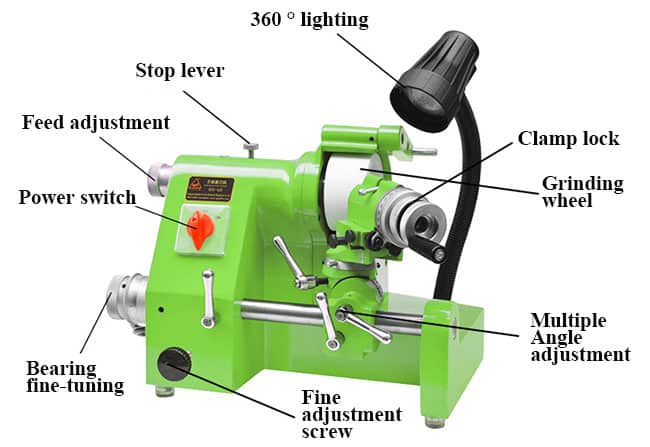
Tool and cutter grinders are used in CNC machines because it has multiple grinding wheels axes so that there is no need of changing the grinding wheel for the different operation. These grinders are mainly used in sharpening and making of cutting tools like milling cutters, drills, endmills, and step tools. It is widely used in metal cutting and wood working industries.
4. Internal Grinder: ( Types of Grinding Machine )
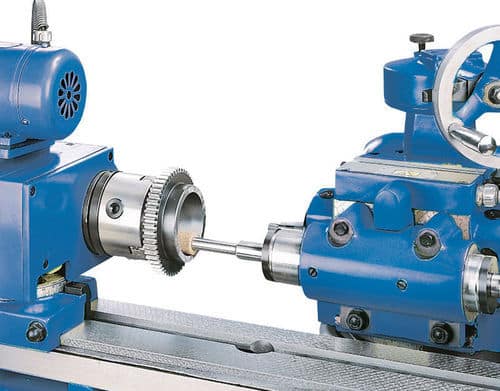
These grinders are used mainly for finishing process. In these grinders the abrasive particles are mounted on the internal side of the grinding wheel. These are used for grinding of cylindrical profiles from inside. These ranges from small to big size depending on the size of work piece.
